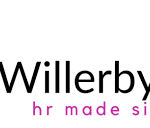In recent research it has been found that employee job satisfaction decreases with the size of the organisation.
In its Autumn Employee Outlook the Chartered Institute of Personnel and Development found that the most satisfied employees were those that were working in smaller companies – employees in micro businesses (2–9 employees) are by far the most satisfied with their jobs, followed by employees working in small organisations (10–49 employees). Older employees (55+ years) also much more likely to be satisfied with their jobs than younger employees (18–24 yeas).
Why are smaller firms better places to work?
There is no magic single answer to this but here are some clues that can be used in larger firms to get the small company feel.
- Distance from the Boss – in small firms there is often a very open and close working relationship with the boss. Without layers of managers getting in the way employee understand and know more of what’s happening in the firm
- Straight line communication – without a hierarchy in place employees get to know what’s happening much quicker, leaving less room for gossip and misinterpretation
- Job ownership – employee have a greater sense of ownership in their roles. In larger organisations roles become fragmented and often disjointed as jobs are broken down into work elements and shared out. In smaller firms employees have greater influence over the whole role and often more authority to make decisions due to a more informal working style
- Involvement and variety – with fewer heads to count, small company employees need to be flexible to learn new skills, tackle new problems or work in new ways as the company grows and expands. This adds variety, and if successful results in positive feedback
- Understand the business – due to the close working relationships, speed of work and informal communication structures employees get what the company does and what it is trying to achieve. Good news is spread quickly along with bad news. If the company needs to change its strategy it does and the employees are often directly involved in making it happen
- See the benefits – a final point to consider is that of seeing the benefits of their actions. In larger firms where work is fragmented its not always clear how what the employee does add’s value. In small firms the consequences of doing or not doing something are readily visible to all so the employee understands how they contribute to the business giving a sense of real achievement.


